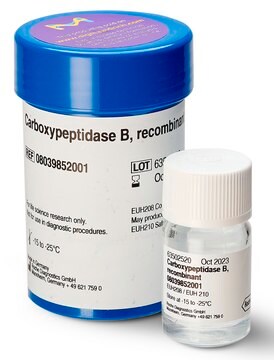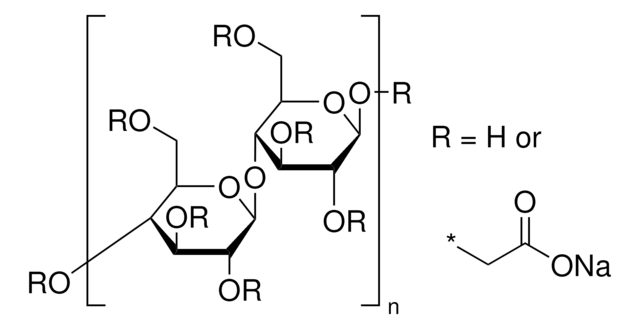C106402
N-Cyclohexyl-N′-(2-morpholinoethyl)carbodiimide methyl-p-toluenesulfonate
95%
Sinónimos:
4-[2-[(Cyclohexylcarbonimidoyl)amino]ethyl]-4-methylmorpholinium p-toluenesulfonate, N-Cyclohexyl-N′-(β-[N-methylmorpholino]ethyl)carbodiimide p-toluenesulfonate salt, CMC, CMC metho-p-toluenesulfonate, Morpho CDI
About This Item
Productos recomendados
assay
95%
form
crystals
mp
113-115 °C (lit.)
SMILES string
Cc1ccc(cc1)S([O-])(=O)=O.C[N+]2(CCOCC2)CCN=C=NC3CCCCC3
InChI
1S/C14H26N3O.C7H8O3S/c1-17(9-11-18-12-10-17)8-7-15-13-16-14-5-3-2-4-6-14;1-6-2-4-7(5-3-6)11(8,9)10/h14H,2-12H2,1H3;2-5H,1H3,(H,8,9,10)/q+1;/p-1
InChI key
GBCAVSYHPPARHX-UHFFFAOYSA-M
¿Está buscando productos similares? Visita Guía de comparación de productos
Application
Storage Class
11 - Combustible Solids
wgk_germany
WGK 3
flash_point_f
Not applicable
flash_point_c
Not applicable
ppe
dust mask type N95 (US), Eyeshields, Gloves
Elija entre una de las versiones más recientes:
¿Ya tiene este producto?
Encuentre la documentación para los productos que ha comprado recientemente en la Biblioteca de documentos.
Los clientes también vieron
Nuestro equipo de científicos tiene experiencia en todas las áreas de investigación: Ciencias de la vida, Ciencia de los materiales, Síntesis química, Cromatografía, Analítica y muchas otras.
Póngase en contacto con el Servicio técnico











